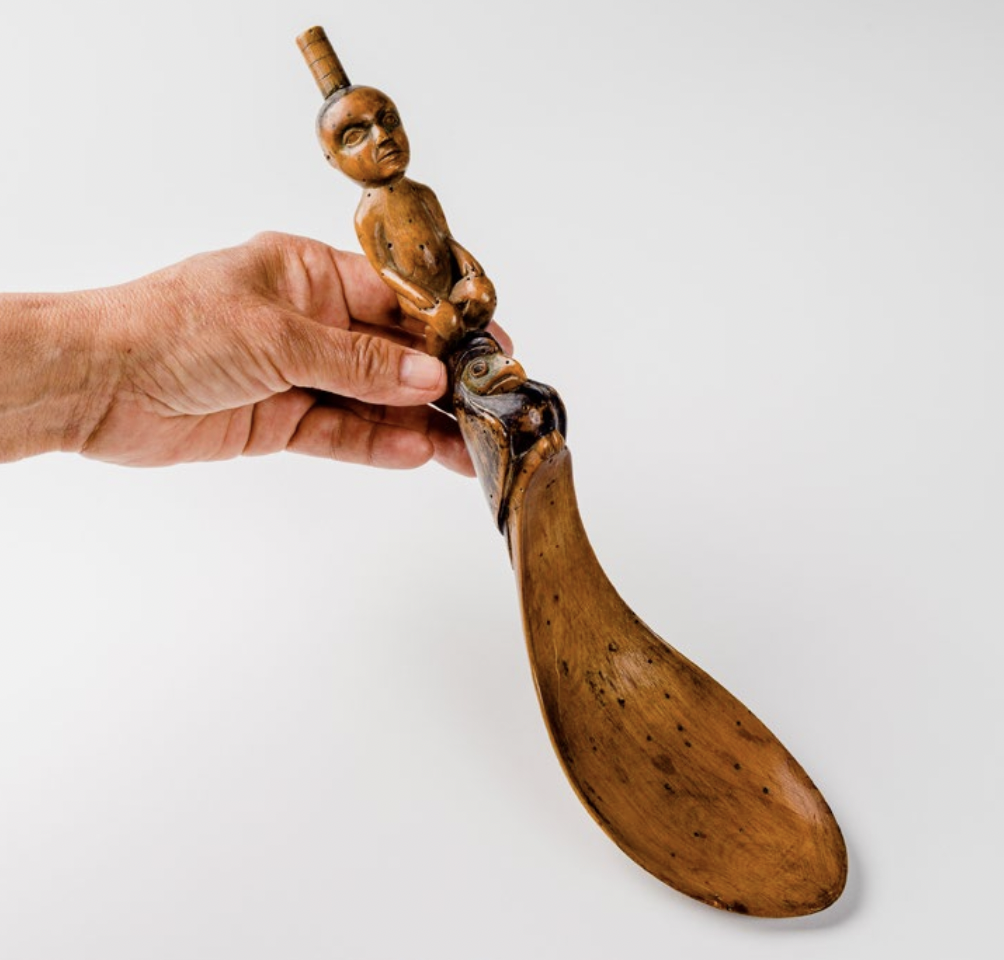The Newsroom
Displaced From an Item: Shared by artist Skeena Reece
Leading up to the National Day for Truth and Reconciliation on September 30, Figure 1 is sharing excerpts, quotes and stories from select Indigenous Art + Culture titles. This story shared by Tsʼmsyen/Gitxsan and Cree artist Skeena Reece is excerpted from Where the Power Is: Indigenous Perspectives on Northwest Coast Art.
When Iʼm first asked to look at and speak about old Northwest Coast pieces, I start feeling guilty, and then I start feeling ashamed. That is my go-to thought. I think itʼs mostly a feeling of being displaced from the item—a feeling of not exactly knowing what it was meant for, not knowing its place in the world. This is usually followed by a feeling of loss and of grief. And then it switches to anger and injustice, which I feel should be my first thought, because itʼs not being so down on myself as opposed to thinking about the way that objects like this have travelled since contact.
When you disconnect the people from these objects—say, during the Potlatch Ban—and you disallow them to speak their language and to have contact with their children, thereʼs this huge displacement. Itʼs kind of like a baby being taken away and fostered into a different home, nowadays. They are displaced from all of that cultural knowledge, the values, the beliefs. When you then ask that person, “Who are you?,” I think they often have a feeling not just of grief and loss, but simply of the guilt and shame of not knowing. But because we know that these things are objects, we donʼt have quite that same dichotomy going on. Instead, weʼre left with questions like, why couldnʼt we get those items back? Or, why wasnʼt my whole life based on trying to understand what they meant?
In Native communities, we are still suffering the effects and trauma of contact. But many of us are very well fed, very well slept, and have a lot of access, a lot of privilege. What you choose to do with that affects how much knowledge you can retain—certainly about these objects. Grief, loss, shame, and guilt aside, when I look at these old pieces, I see craftsmanship. I see them as tools, and I have curiosity about what tools the carvers could have used to make them. I see a people of industry. I see a people who were bent on legacy. I see intentional objects. I see a system of organizing information, dates, people, story. And underlying everything is this belief in the equality of human beings with their environment and with the spirit world.
I look at the complexity of the displacement and locate it, so that Iʼm not so daunted by not knowing—and by the task of trying to find out more. Now we have the immediacy of trying to still figure out what the form and function of each object was and is. Itʼs an emergency, right? Iʼm sure many people are curious and enthusiastic about just simply knowing. Itʼs about actually connecting these things to our social networks again—to people.
hapsgawlgmgan (Smʼalgya ̄x: spoon) / daagyaalʼuu
(Haida: feast spoon) c. 1850–1880
Tsʼmsyen or Haida artist
hardwood, paint
31 × 7 × 7.5 cm
Elspeth McConnell Collection, gift to Moa, 2017 | 3260/44
This spoon, perhaps carved of maple, features a human figure atop a small bird; the four potlatch rings on the humanʼs head likely indicate the host familyʼs prerogatives and high social rank.
Actions you can take this week, and on the National Day for Truth and Reconciliation:
- Join daily lunch and learns hosted by the National Centre for Truth and Reconciliation
- Attend a National Day for Truth and Reconciliation event near you
- Buy from an Indigenous artist, give an Indigenous-led podcast a listen or check out new music by Indigenous artists
- Read a book by an Indigenous author
- Make a donation to the Indian Residential School Survivors Society
- Sign up for a free course such as Indigenous Canada at the University of Albert
Figure 1 Publishing is located in the traditional, unceded territory of the xʷməθkʷəy̓əm (Musqueam), Sḵwx̱wú7mesh (Squamish) and səl̓ilw̓ətaʔɬ (Tsleil-Waututh) peoples. We recognize that British Columbia and Canada were created through organized dispossession and colonial violence, and we commit to work responsibly and constructively with Indigenous authors and contributors to help create a vital present and future for Indigenous and non-Indigenous communities living on these lands.
